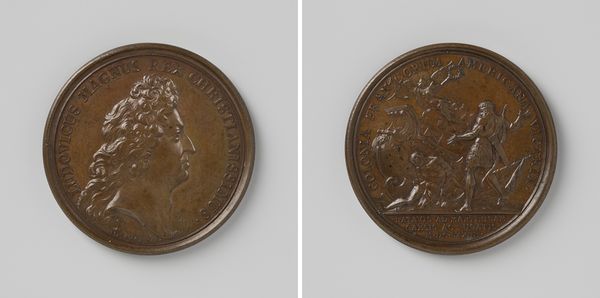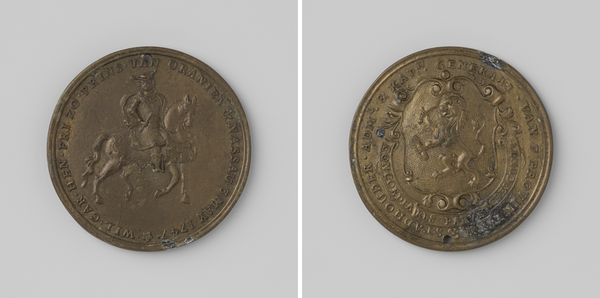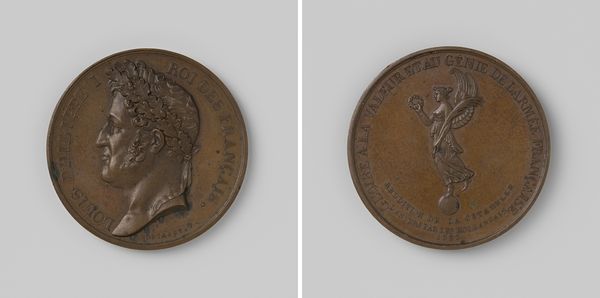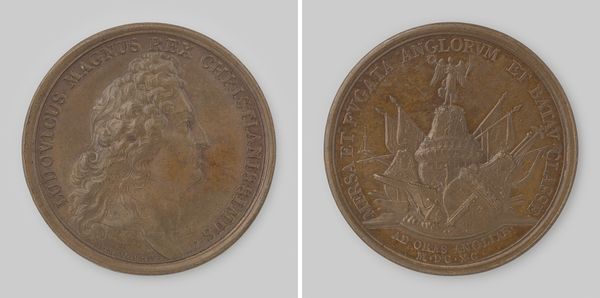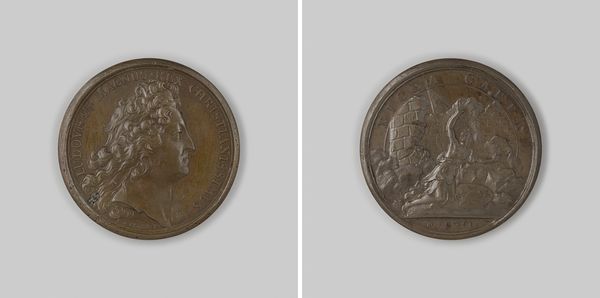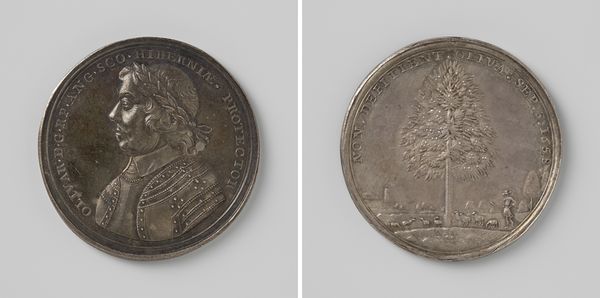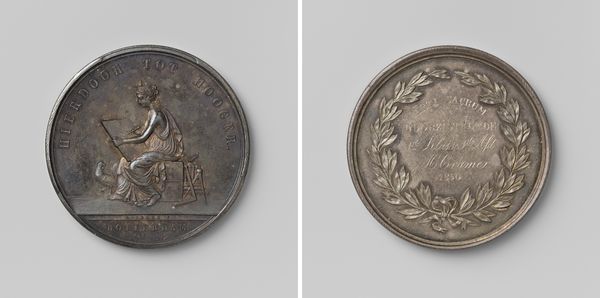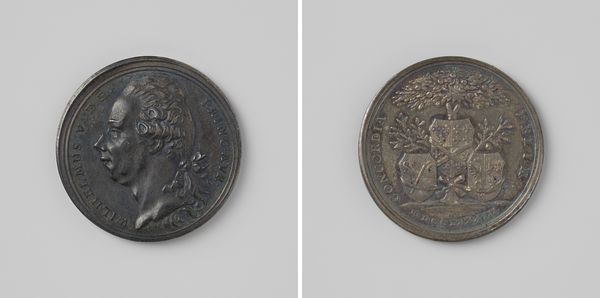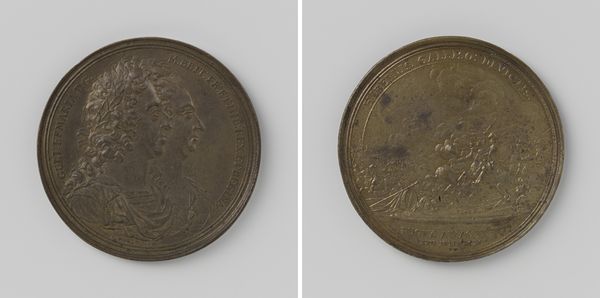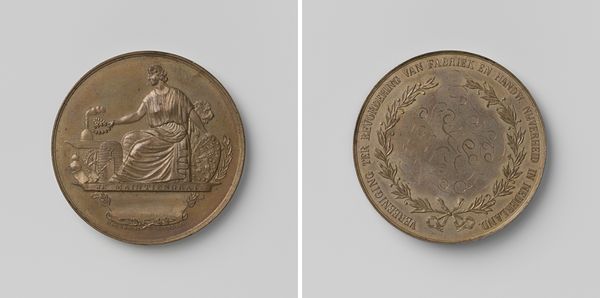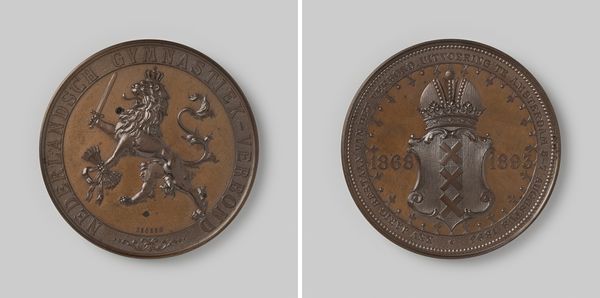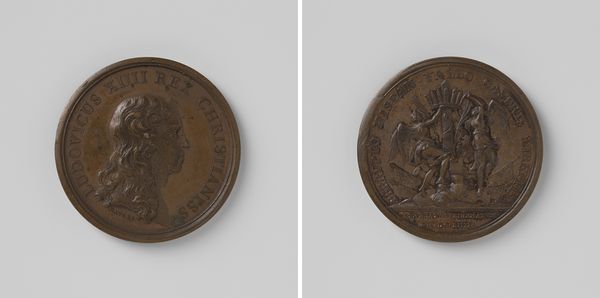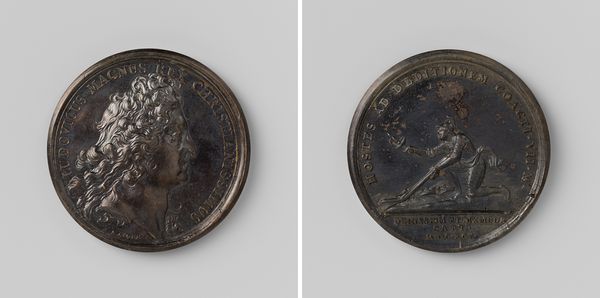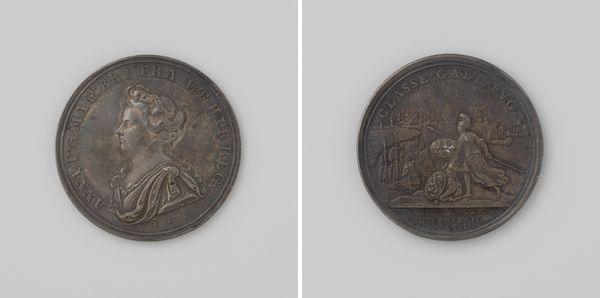
metal, bronze, sculpture
#
portrait
#
metal
#
sculpture
#
bronze
#
sculpture
#
ceramic
#
history-painting
Dimensions: diameter 4.1 cm, weight 30.15 gr
Copyright: Rijks Museum: Open Domain
Editor: Here we have a bronze medal created by Jean Mauger between 1699 and 1703, titled "Vernietiging van de Engelse en Nederlandse vloot bij Beachy Head" – or, The Destruction of the English and Dutch Fleet at Beachy Head. It feels very regal and commemorates a specific event. What can you tell us about the historical context of this piece? Curator: Well, this medal serves as a powerful example of art being used as propaganda. Consider the period – the late 17th century – and the ongoing power struggles between France, England, and the Netherlands. This medal isn't just a representation of a naval victory; it’s a deliberate construction of Louis XIV's image as a dominant European power. Editor: So it’s less about accurate historical documentation and more about image-building? Curator: Precisely. Note how the imagery likely exaggerates the extent of the English and Dutch defeat. It was very common. These objects functioned within a complex system of patronage and political messaging. What strikes you about the depiction of Louis XIV himself on the medal? Editor: The profile portrait seems pretty standard for the time, I guess, regal hairstyle, strong jawline...but does it have a purpose? Curator: Exactly, consider who was seeing these medals? How did Louis XIV wish to be seen? This medal circulated amongst elites. This imagery reinforces his authority, aligning him with a lineage of powerful rulers, divine right, and solidifying his public role. Editor: So the medal, beyond commemorating a battle, becomes a tool in shaping public opinion and bolstering Louis XIV's power, and understanding that really shifts how I view the artwork itself. Curator: It moves us to consider how such objects both reflect and actively shape the social and political landscapes they inhabit. A valuable lesson to remember.
Comments
No comments
Be the first to comment and join the conversation on the ultimate creative platform.
